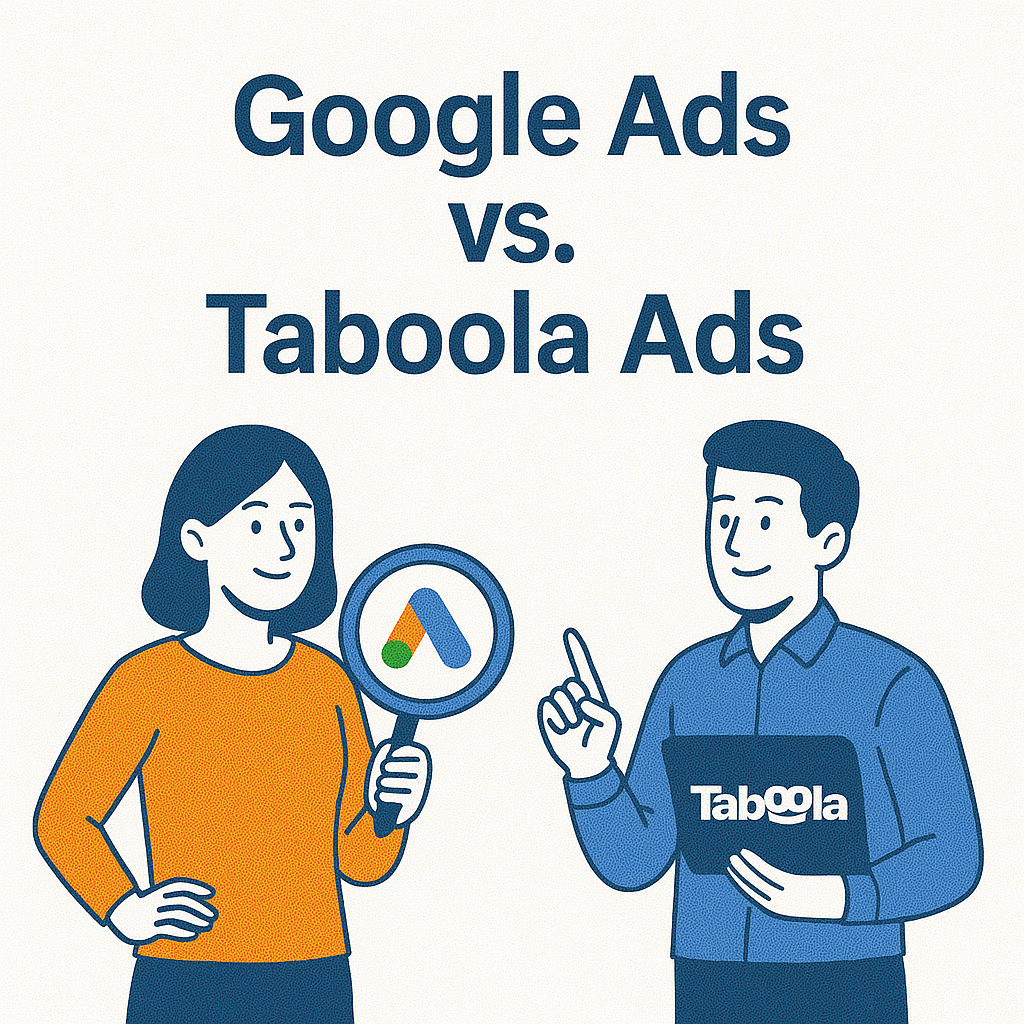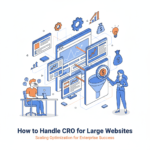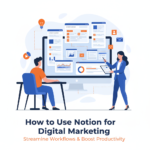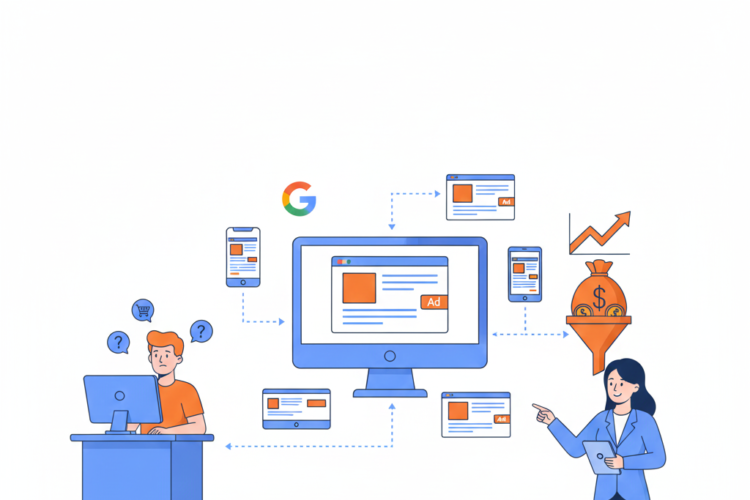
Google Ads vs. Taboola Ads
Google Ads vs. Taboola Ads: Key Differences Explained
| Feature | Google Ads | Taboola Ads |
|---|---|---|
| Ad Type | Search, Display, YouTube, Shopping | Native Ads (sponsored content) |
| Placement | Google Search, Gmail, YouTube, Display Network | Premium publisher sites (e.g., CNN, NBC, Business Insider) |
| User Intent | High (search-driven) | Low to medium (discovery-driven) |
| Targeting | Keywords, audiences, device, location, demographics, etc. | Interests, behavior, geo, device, context |
| Format | Text, image, video, shopping cards | Headlines + image (like article previews) |
| Pricing Model | CPC, CPM, CPA | CPC, CPM |
| Traffic Type | Active (users are searching) | Passive (users are browsing content) |
| Best For | Lead generation, product sales, retargeting | Content discovery, awareness, traffic generation |
| Network Reach | Google Search + 2M+ websites | 9,000+ publishers, 500M+ daily active users |
| Analytics | Google Ads dashboard, GA4 | Taboola Ads dashboard, GA4 integration |
| Remarketing | Yes | Yes |
| AI/Automation | Highly advanced (Performance Max, Smart Bidding) | Good, with predictive audience tools |
1. User Intent: Active vs Passive
Google Ads:
Users actively search for specific keywords. Ads are shown when intent is high (e.g., “buy running shoes”).
-
Great for: Direct response, high-conversion campaigns.
-
Example: A user types “best accounting software” and sees your Google ad.
Taboola Ads:
Users discover ads while reading content on media sites. Intent is passive or exploratory.
-
Great for: Top-of-funnel awareness, storytelling, promoting blog content.
-
Example: A user reads a Forbes article and sees a native ad like “10 Tools Every Startup Should Use.”
2. Ad Placement & Context
Google Ads:
-
Appears on search engine results (Google Search), YouTube, Gmail, mobile apps, and websites in the Google Display Network (GDN).
-
Ads are contextually or keyword-triggered.
Taboola Ads:
-
Shown at the bottom or side of articles on news and publisher sites.
-
Ads blend with editorial content and are often labeled “Sponsored.”
3. Ad Format
Google Ads:
-
Search Ads: Text-only
-
Display Ads: Image or responsive banners
-
Video Ads: YouTube or in-app
-
Shopping Ads: Product data, price, reviews
Taboola Ads:
-
Native Ads: Headline + image designed to look like editorial articles
-
Video Ads: In-feed and outstream
-
Focus is on engaging thumbnails and curiosity-driven headlines
4. Targeting Capabilities
Google Ads:
-
Keyword targeting (search intent)
-
Affinity audiences, in-market audiences
-
Remarketing and customer match
-
Detailed demographics
-
Contextual & placement targeting (for Display)
Taboola Ads:
-
Contextual targeting (content relevance)
-
Interest-based audiences
-
Lookalike audiences
-
Location, device, OS targeting
-
Remarketing via Taboola Pixel
5. Cost and Pricing
Google Ads:
-
CPC (Cost-Per-Click): Varies by keyword competitiveness. High-intent keywords can be expensive.
-
Smart Bidding: Google optimizes for conversions or CPA using machine learning.
-
Average CPC for competitive industries (e.g., legal, finance) can exceed $5–$50+.
Taboola Ads:
-
CPC is usually lower than Google Ads—ranging from $0.20 to $1.50 depending on niche and geo.
-
Best for cheap traffic acquisition at scale.
-
CPM (Cost-Per-Thousand Impressions) also available for video ads.
6. Conversion Rates & Quality of Leads
Google Ads:
-
Higher intent = higher conversion rates
-
More qualified leads
-
Better for direct purchases or form fills
Taboola Ads:
-
Lower intent = lower conversion rate, but cheaper CPC
-
Good for building email lists, retargeting audiences, or educating readers
7. Use Case Scenarios
| Objective | Best Platform |
|---|---|
| Brand Awareness | Taboola |
| Content Promotion (Blogs, Articles, Whitepapers) | Taboola |
| Lead Generation (Forms, Calls) | Google Ads |
| Ecommerce Sales | Google Ads (especially with Shopping) |
| Retargeting Site Visitors | Both |
| App Installs or Video Views | Google Ads (via YouTube), or Taboola Video |
| Driving Cheap Website Traffic | Taboola |
8. Analytics and Reporting
Google Ads:
-
Highly detailed analytics
-
Conversion tracking and multi-touch attribution
-
Integrates directly with Google Analytics 4 (GA4) and Looker Studio
Taboola Ads:
-
Has its own dashboard with campaign performance, conversions, and audience insights
-
Can integrate with GA4, UTM parameters, and custom pixels
9. Creative Strategy Differences
Google Ads:
-
Focus on clear offers, keywords, and urgency (“Buy now”, “Free trial”, etc.)
-
Highly structured ad copy and landing pages
Taboola Ads:
-
Focus on clickbait-style headlines, curiosity, emotion, and storytelling
-
Use engaging images and editorial-style landing pages
10. AI and Automation
Google Ads:
-
Powerful AI (Performance Max, Smart Campaigns)
-
Automated bidding, targeting, creative testing
Taboola Ads:
-
Uses AI to optimize placements and creatives based on audience interaction
-
Predictive algorithms for engagement and CTR improvement
Final Verdict: Which Should You Choose?
| If your goal is… | Use… |
|---|---|
| High-intent lead generation | Google Ads |
| Driving immediate product sales | Google Ads (Search & Shopping) |
| Promoting blog posts, whitepapers, listicles | Taboola Ads |
| Getting cheap traffic for retargeting | Taboola Ads |
| Retargeting past visitors | Both |
| Brand storytelling at scale | Taboola Ads |
| Local search and call-based businesses | Google Ads (Local Services) |
Summary
-
Google Ads is ideal for performance marketing, direct response, and purchase-driven campaigns.
-
Taboola Ads excels in content amplification, awareness, and cost-efficient top-of-funnel strategies.
✅ Use Google Ads to capture demand.
✅ Use Taboola Ads to create demand.
Author



